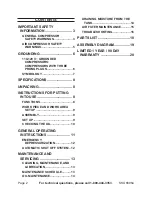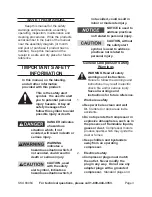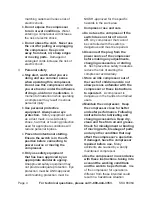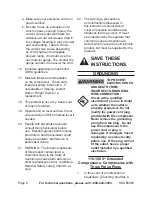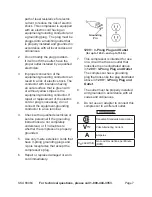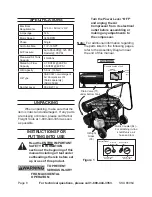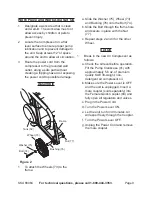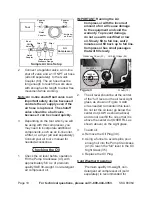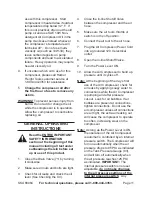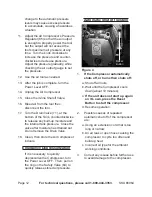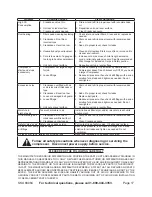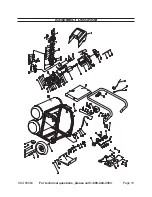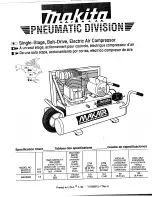
Page 12
For technical questions, please call 1-800-444-3353.
SKU 68064
change to the automatic pressure
levels may cause excess pressure
to accumulate, causing a hazardous
situation.
11. Adjust the Air Compressor’s Pressure
Regulator (85) so that the air output
is enough to properly power the tool,
but the output will not exceed the
tool’s maximum air pressure at any
time. Turn the knob clockwise to
increase the pressure and counter-
clockwise to decrease pressure.
Adjust the pressure gradually, while
checking the air output gauge to set
the pressure.
12. Use the air tool as needed.
13. After the job is complete, turn the
Power Lever OFF.
14. Unplug the Air Compressor.
15. Close the in-line Shutoff Valve.
16. Bleed air from the tool then
disconnect the tool.
17. Turn the Drain Valve (71), at the
bottom of the Tank, counterclockwise
to release any built-up moisture and
the internal tank pressure. Close the
valve after moisture has drained out.
Do not remove the Drain Valve.
18. Clean, then store the Air Compressor
indoors.
Emergency Depressurization
If it is necessary to quickly
depressurize
the Compressor, turn
the Power Lever OFF. Then, pull on
the ring on the Safety Valve (64) to
quickly release stored air pressure.
Automatic Shut off System
1.
Reset
Button
Figure 4
If the Compressor automatically
shuts off, or hums then shuts off:
a. Shut off all tools.
b. Wait until the Compressor cools
down (about 10 minutes);
c.
If the unit does not start up again
on it’s own, press the Reset
Button to start the compressor
;
d. Resume operation.
2. Possible causes of repeated
automatic shut off of the compressor
are:
a. Using an extension cord that is too
long or narrow;
b. An air leak or open hose causing the
compressor to cycle too often and
build up heat.
c. Incorrect oil type for the ambient
working conditions.
3. Correct any issues before further use
to avoid damage to the compressor.


